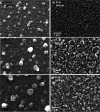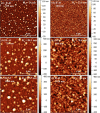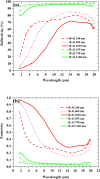Spectral Emissivity and Thermal Conductivity Properties of Black Aluminum Films
- PMID: 39743727
- PMCID: PMC11841031
- DOI: 10.1021/acs.langmuir.4c03838
Spectral Emissivity and Thermal Conductivity Properties of Black Aluminum Films
Abstract
Black aluminum is a material characterized by high surface porosity due to columnar growth and exhibits unique optical properties that make it attractive for applications such as light trapping, infrared detection, and passive thermal radiation cooling. In this study, we correlate the structural and optical properties of black aluminum by comparing it with conventional reflective aluminum layers. These layers of varying thicknesses were deposited on fused silica substrates, and their optical properties were analyzed. COMSOL simulations, supported by experimental data, reveal that black aluminum's structure leads to a significant reduction in visible light reflectivity and an increase in emissivity in the near- and mid-infrared ranges. This enhanced emissivity is partly due to the presence of aluminum nitride (AlN) grain boundaries and an oxidized surface layer. Optically, black aluminum differs significantly from reflective aluminum by presenting a reflectivity below 5% in visible wavelength and an average emissivity of approximately 0.4-0.5 from 1.2 to 20 μm. Thermally, it possesses approximately ten times lower thermal conductivity and doubles the volumetric heat capacity. These differences are attributed to its porous structure, nanoscale crystallites, and the presence of aluminum nitrides and oxides within the material.
Conflict of interest statement
The authors declare no competing financial interest.
Figures







References
LinkOut - more resources
Full Text Sources

